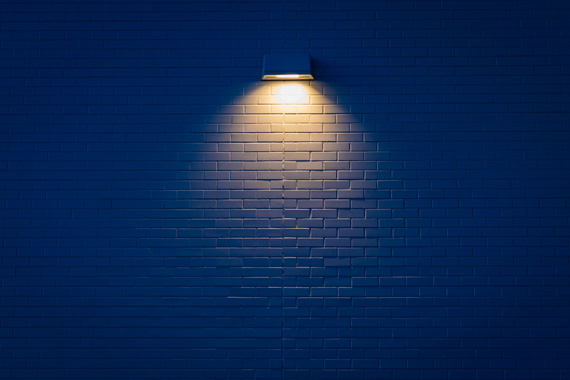The way light acts upon a subject depends on the physical properties each light source presents. Before taking on the challenge of creative photographic lighting it’s worth your while to understand some of these properties.

Photo by Greg Rosenke; ISO 100, f/3.5, 1/8-second exposure.
Light Characteristics
Light characteristics define the way surfaces are affected by specific light sources.
Hard
- Creates harsh shadows
- Accentuates textures
- Easy to control and shape
Soft
- Creates soft shadows
- Difficult to control
- Presents form through a range of tones
Color Quality
Color quality defines the color cast from a particular light source.
- Known as color temperature
- Derived from the colors emitted when heating a black object through a range of temperatures. These colors are matched to light sources we use in photography.
- Measured in ºK (Degrees Kelvin, just referred to as Kelvin or K)
Light Sources
- Candle light: 1200K
- Incandescent light bulb: 2700K
- Red Head (quartz halogen bulb): 3200K
- Sunrise and sunset: 3200K
- Flash light: 5600K
- Sunlight at midday: 5000K
- Outdoor shade: 6000K
- Skylight: 10000K
The temperatures listed will change depending on the age or wattage of the source light.
The color cast is referred to warm at the lower color temperatures and cool at the higher temperatures, changing from orange-yellow at the bottom to blue-white at the top. This is why the camera has comprehensive white balance, or color balance control functions that remove the color casts from the different sources and render white as white.
Natural Light
- Natural light is from the sun, which can still present indoors by shining through windows, doors and skylights. These illuminations are a source which can be used to creatively light a subject. At certain times of the day the light is very even and is often diffused through a sun filter in a window.
- Another sources of natural light is fire (candle, campfire)
Photo by Daniel Montemayor; ISO 100, f/1.8, 1/320-second exposure.
Artificial
- Light powered by electricity is artificial light.
- The most common are listed under Light Sources above.
- A flash closely matches the light quality from the sun, but is still artificially generated.
Continuous
Continuous light is defined by a light source that is always there when switched on (light bulb or fluorescent) or a source such as sunlight.
- The effect of a continuous light on a subject is always there to see (intensity and shadow positions) making adjustments real time and therefore easier.
- Using a continuous light source also affects the way exposure is controlled regarding shutter speed in relation to aperture diameter.
- The exposure is affected by a fast or a slow shutter speed using a continuous light source.
Flash
The flash offers a burst of instantaneous light and requires different lighting techniques to that of continuous lighting.
- The shutter is synchronized to the flash
- At certain shutter speeds the flash light will not register on the film or imaging device.
- A model light or continuous light is often used to judge shadows on the subject before the flash is fired.
- Blurring is less of a problem because the flash freezes a moment in time.
- There are in effect two exposures when firing a flash. The camera exposes the ambient light while the shutter is released for a short time to allow the burst of flash into the camera. This duration that the shutter is open is often not enough time for the ambient light to make any difference to the exposure.
Photo by Sam Javanrouh; ISO 800, f/5.0, 1/160-second exposure.
Application
Understanding light characteristics, natural or artificial, will help elevate you to the next level of photography. There is a plethora of lighting equipment on the market that you can acquire once you have found your preferred genre or niche in photography (weddings, portraiture, landscape, glamour). Photo lights have been designed based on the above properties and come in many shapes and sizes to meet specific photographic lighting applications.
About the Author:
Rob Gray from FacetMedia teaches television production as well as photography bringing over forty years of experience.
Did you appreciate this newsletter? Please help us keep it going by Joining Our Patreon Supporters
What are your thoughts on this article? Join the discussion on our Facebook Page
PictureCorrect subscribers can also learn more today with our #1 bestseller: The Photography Tutorial eBook
The post 💡 Understanding Basic Light Properties for Photography appeared first on PictureCorrect.
from PictureCorrect https://ift.tt/FidJYhl
via IFTTT






0 kommenttia:
Lähetä kommentti